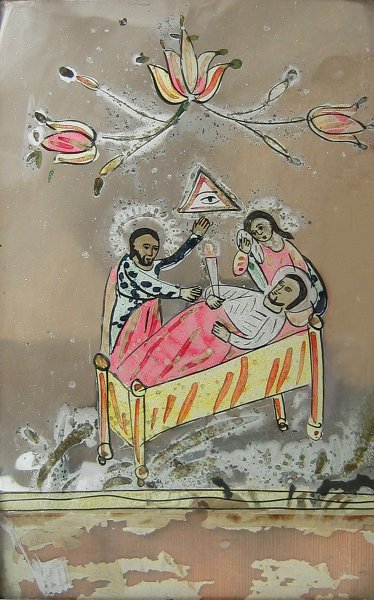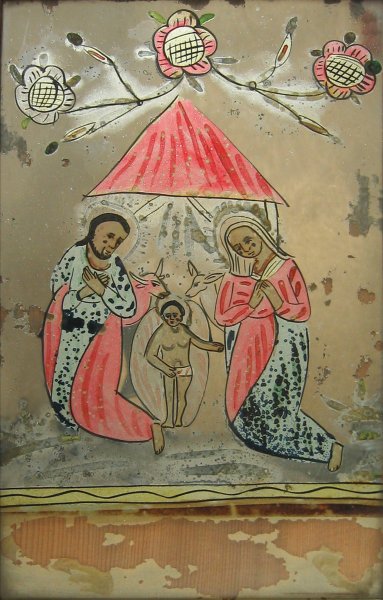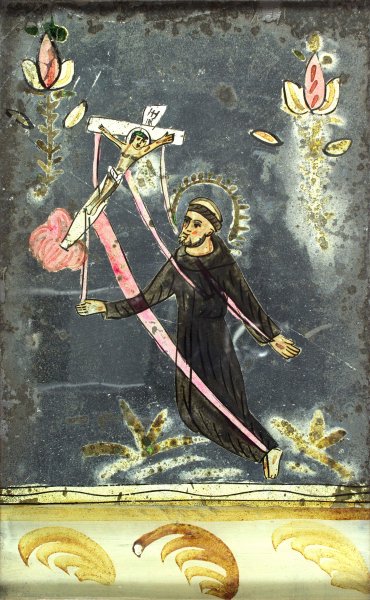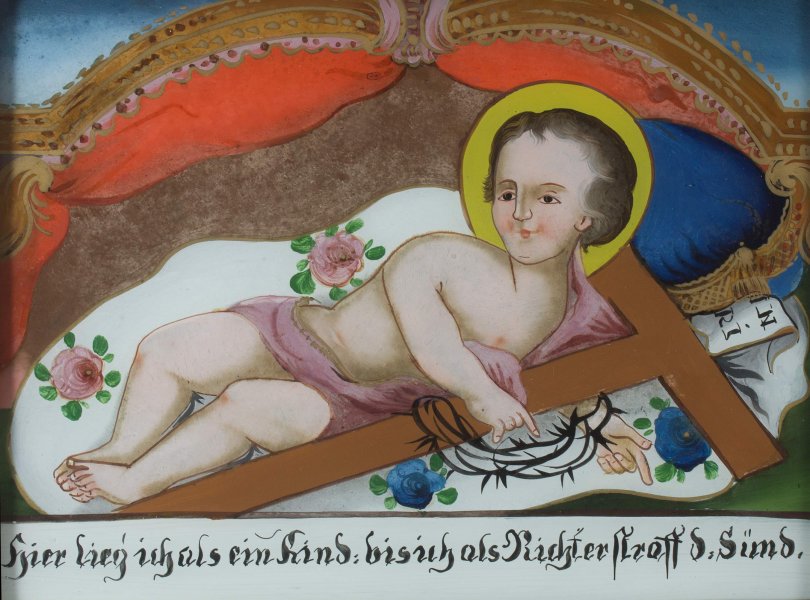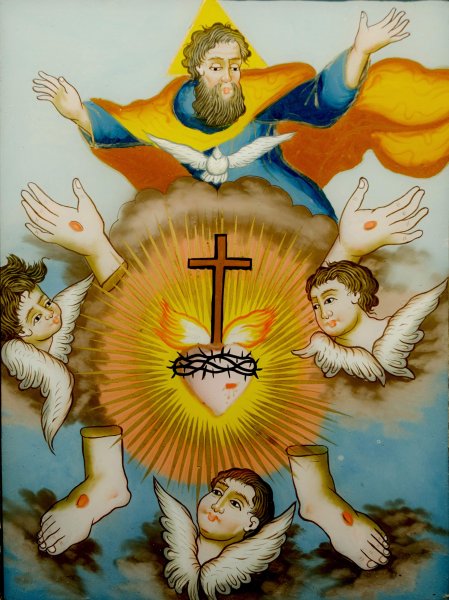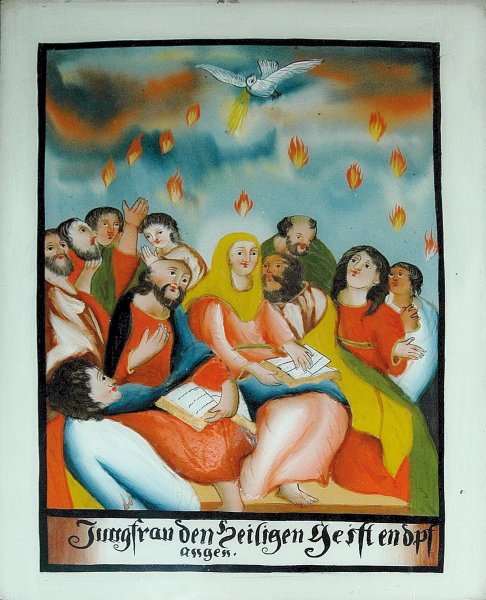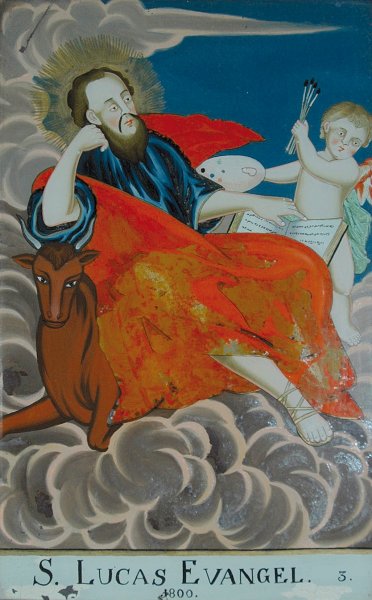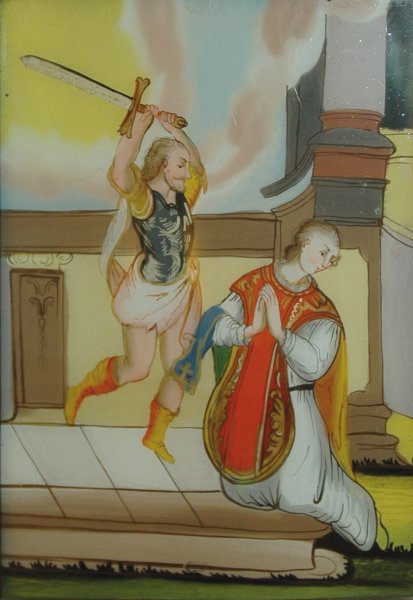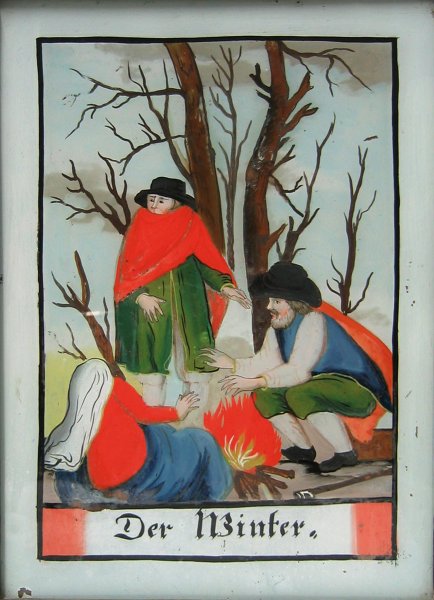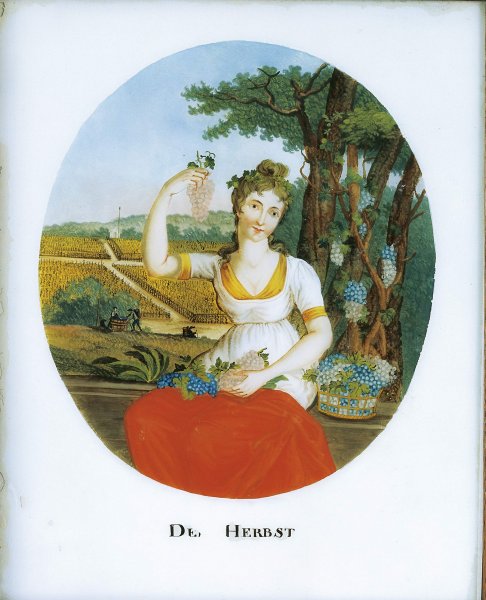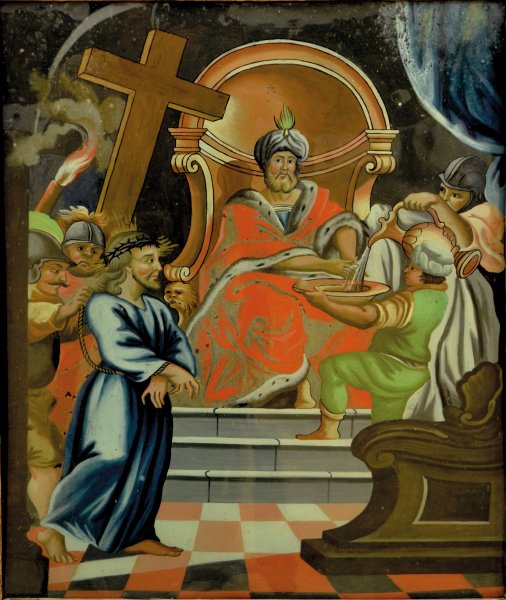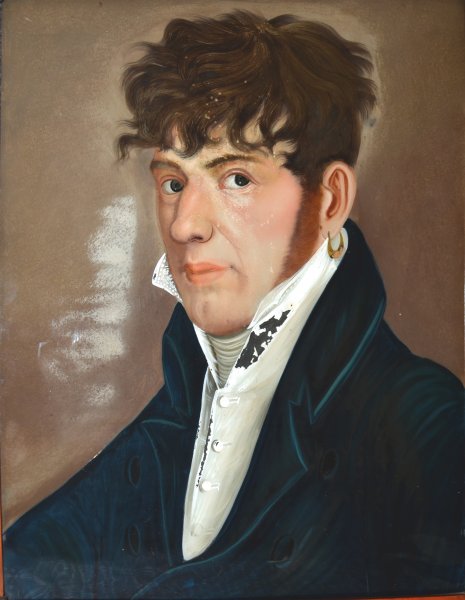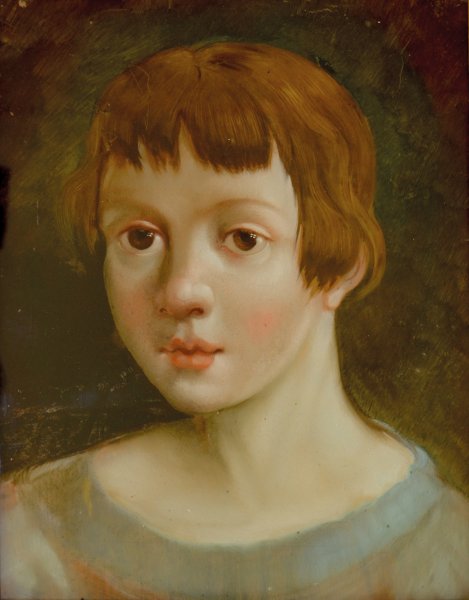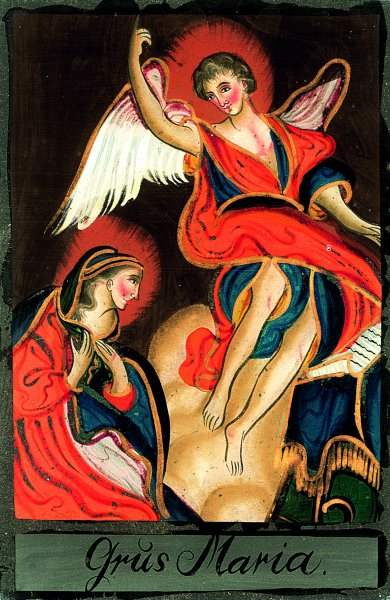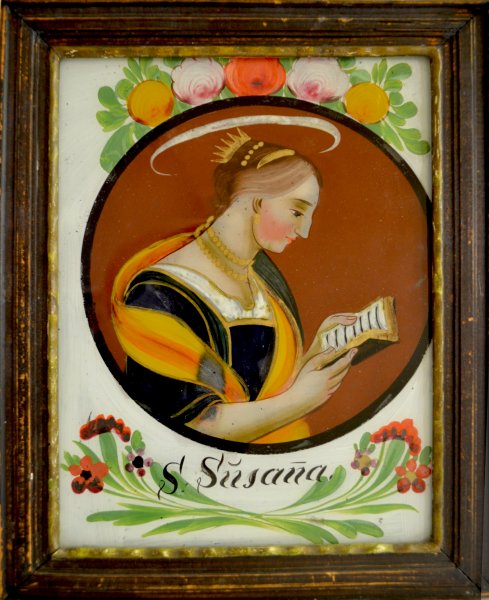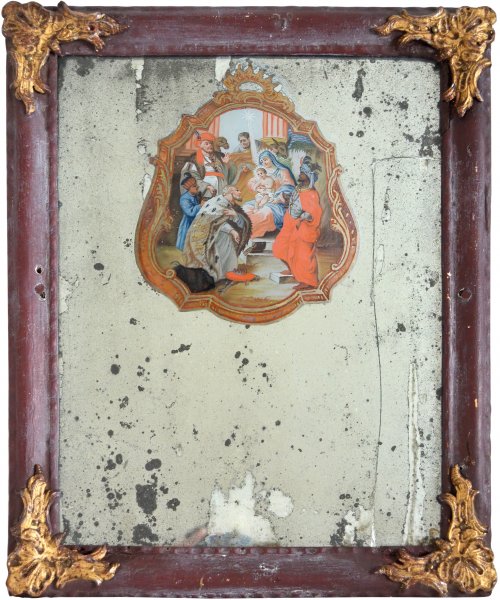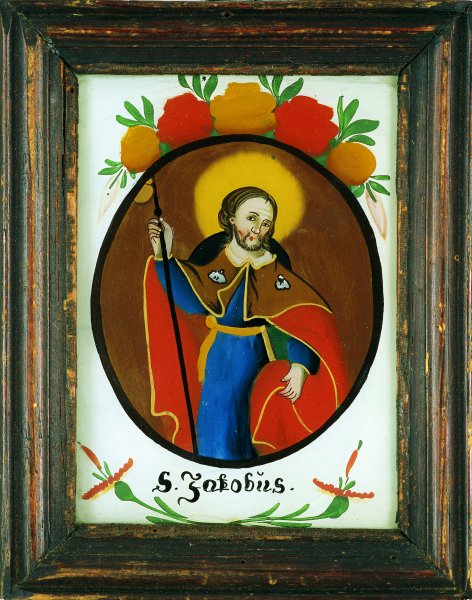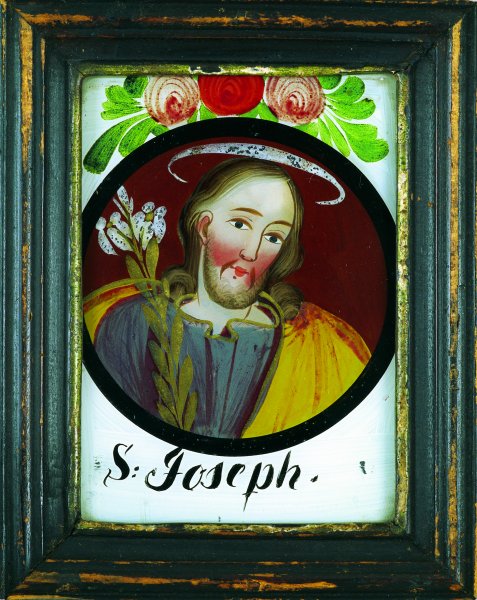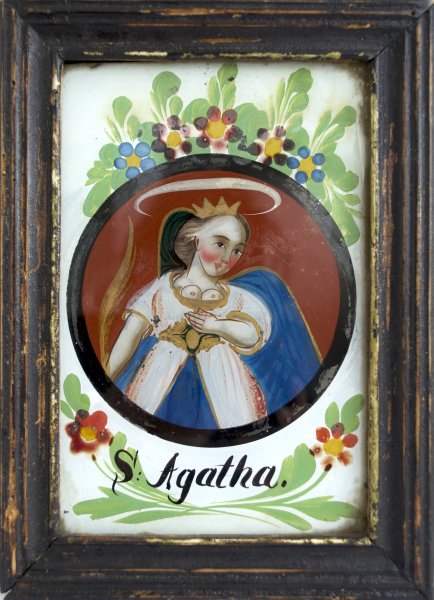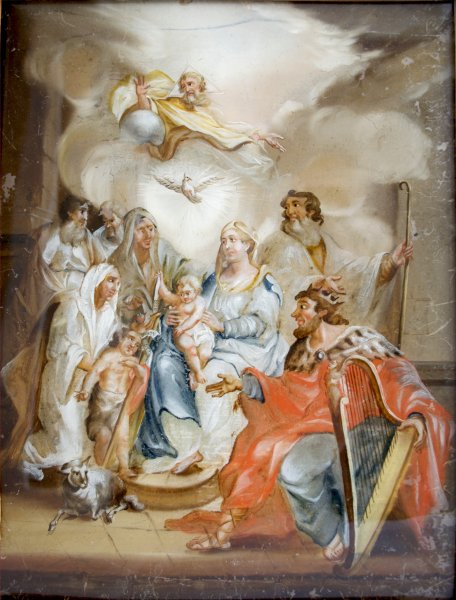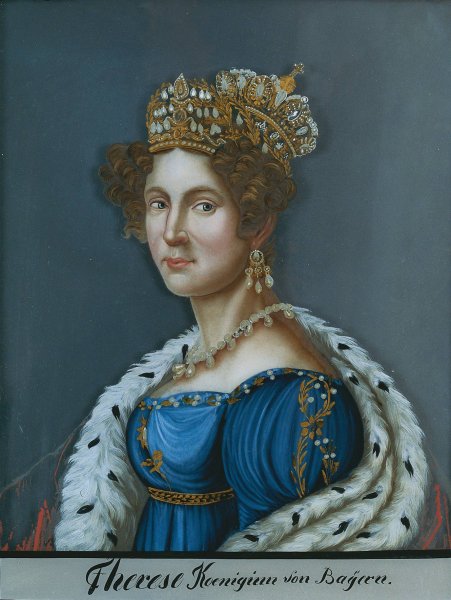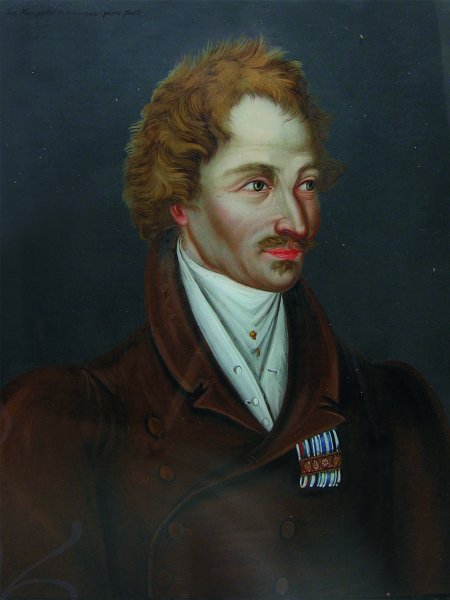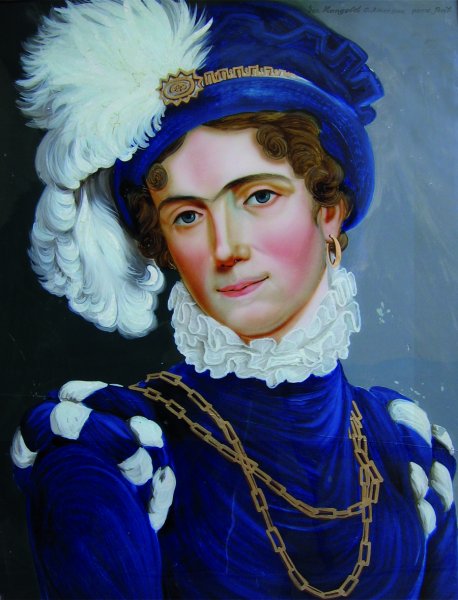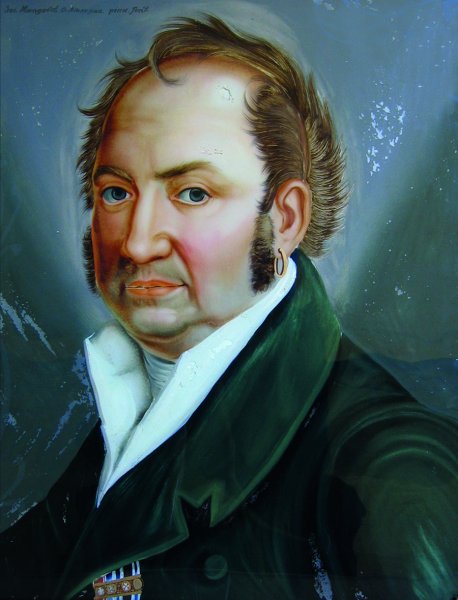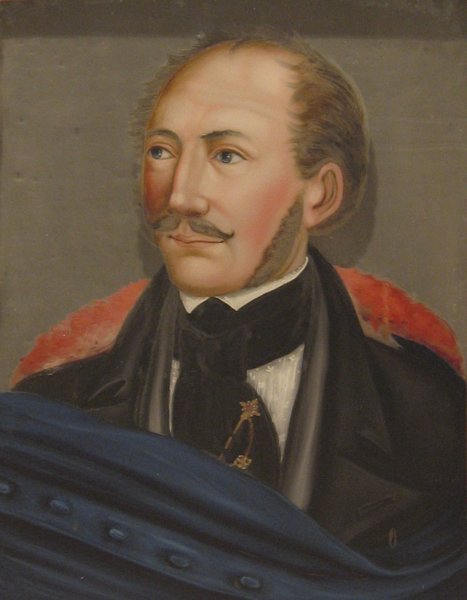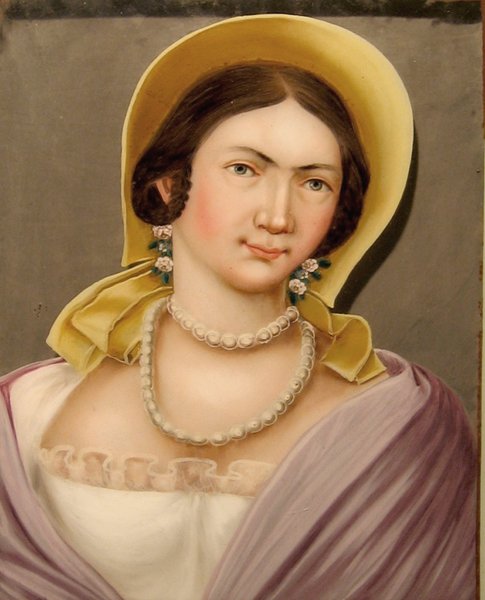The Reverse Glass Painting Collection is, unfortunately, not open at the moment.
A number of reverse glass paintings were among the objects that formed the core of the collection when the museum was first opened. These include the Stations of the Cross from the Lang family that is the earliest known reverse glass painting by an Oberammergau artist.
In 1955 the parish of Oberammergau acquired a large part of the important collection of reverse glass paintings owned by the master brewer Johann Krötz (1858–1919) of Murnau. By the end of the 19th century Krötz had amassed more than one thousand reverse glass paintings, most of which were painted in the area around Lake Staffel and Oberammergau. That such a homogenous holding of works from this important region for reverse glass painting had been established very early on, and that the internationally famous artists Gabriele Münter (1877–1962) and Wassily Kandinsky (1866–1944) became familiar with this collection in Murnau, underline the significance of the Krötz Collection.
Reverse glass paintings fascinated the artists in the circle of the ‘Blue Rider’ to such an extent that they not only started to collect but also to paint on glass themselves. In addition, Franz Marc (1880–1916) and Wassily Kandinsky selected nine pictures from the Krötz Collection to be included in the almanac The Blue Rider, seven of which can be seen in Oberammergau Museum. This programmatic publication had a decisive influence on the development of modern art.
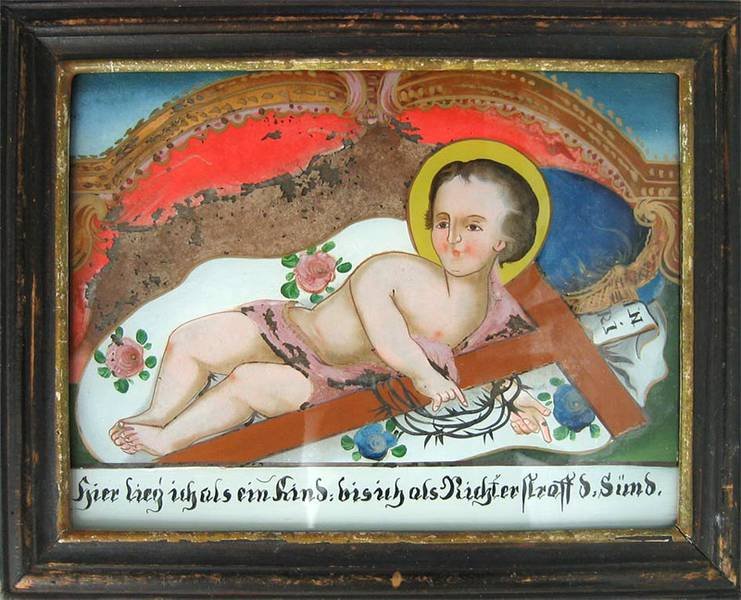
Through the gift of Harold Stobitzer (1912–1983) and his wife, Evi (1912–1988), pictures from the Bavarian and Bohemian Forests, as well as other regions, entered the collection in 1987. Works from numerous centres for reverse glass painting in Europe and elsewhere, dating from different centuries and, consequently, in completely different painterly styles, now form part of the museum collection.
The reverse glass painting collection in Oberammergau Museum is one of the largest of its kind in Europe.
Reverse glass painting flourished between 1550 and 1850. Originally an exquisite form of art created by master craftsmen for the wealthy, it later became a folk art genre from the second half of the 18th century onwards when glass became a less expensive material. In its simplified form reverse glass painting became widespread and was incredibly popular thanks to its attractive, bright colours and the shimmer of the glass. Lorenz Gastl of Murnau was the first to create reverse glass paintings in the late 17th century. From 1760 onwards, this painting technique also became established in neighbouring villages in the Lake Staffel region and in Oberammergau.
Through the success of cheaper colour prints in the mid-19th century, reverse glass painting lost its popularity altogether. Heinrich Rambold (1872–1955), from whom Gabriele Münter, as a member of the ‘Blue Rider’ group of artists, learnt the technique of reverse glass painting, was the last true painter to work in this genre in the region as a whole. In Oberammergau, reverse glass painting came to an end in 1871 upon the death of Joseph Anton Lang (1780–1871), only to be revived once again in the second half of the 20th century.
The history of reverse glass painting in Oberammergau started with Andreas Lang (1738–1807) who returned to his native village around 1760 after completing his apprenticeship as a painter in Augsburg. By 1768, nine reverse glass painters had already been mentioned in documents. These artists created exacting pictures, either as individual works or in series, that were by no means exclusively depicted religious subjects.
Joseph Anton Lang (1780–1871) and Joseph Mangold (1787–1850) became the best-known artists of the next generation. Mangold and his workshop were the most successful and artistically skilled of all reverse glass painters from Oberammergau. His portraits also testify to this.
Following the economic slump caused by secularisation and wars, reverse glass painters adopted a new approach from around 1810 onwards. In addition to individual pictures of high quality, standardised, very colourful pictures of saints and biblical scenes in medallion form, decorated with ornamental floral designs, were produced in large numbers and in a variety of different sizes. These found a ready market and, in the first half of the 19th century, hundreds of thousands of such works were sold.

Landschaft in der Hinterglasmalerei des 18. Jahrhunderts
Wolfgang Steiner, 2013
Deutscher Kunstverlag
Preis: € 19,90 inkl. MwSt.
zzgl. Versandkosten
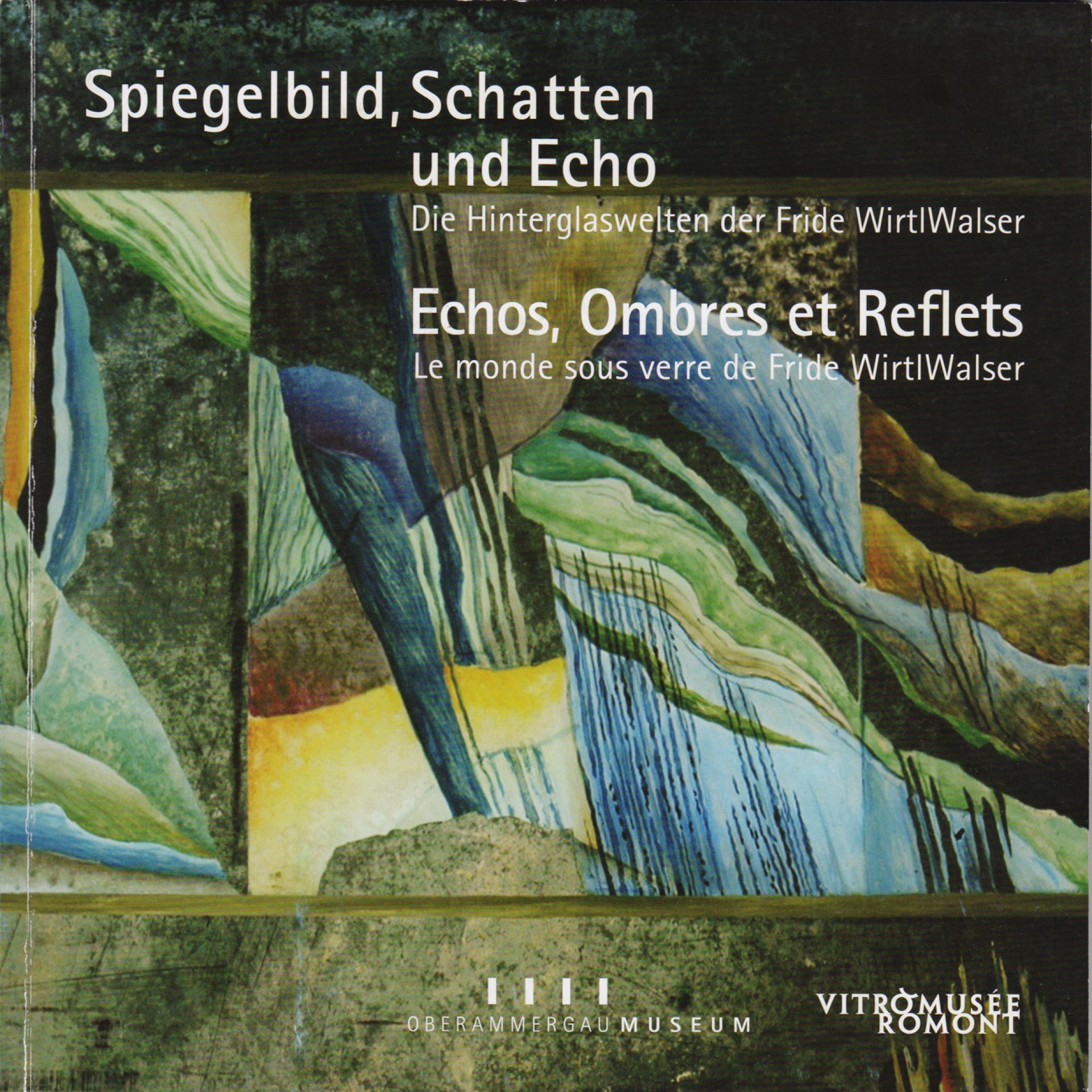
Spiegelbild, Schatten und Echo
Die Hinterglaswelten der Fride WirtlWalser
Katalog deutsch/französisch
112 Seiten
Preis: € 10,- inkl. MwSt.
zzgl. Versandosten
Bestellung gegen Vorauskasse zzgl. Versandkosten, E-Mail an: museum@gemeinde-oberammergau.de
